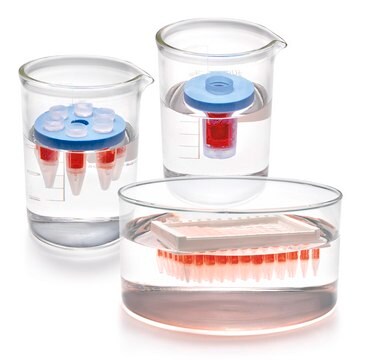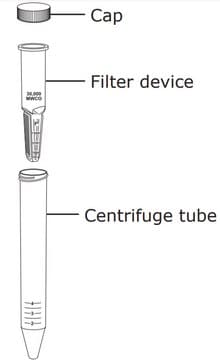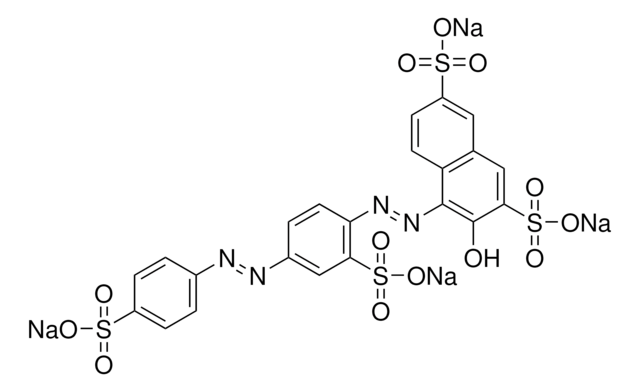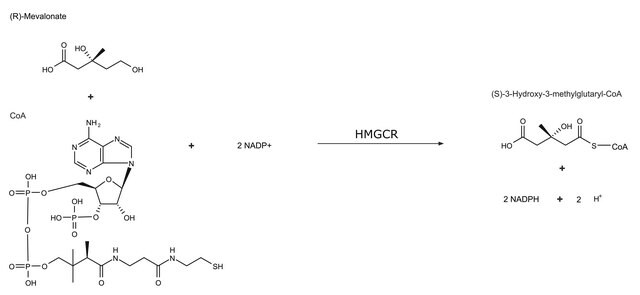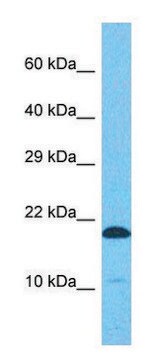ABS1064-I
Anti-Hypusine
Synonym(s):
N -4-amino-2-hydroxybutyl(lysine)
Sign Into View Organizational & Contract Pricing
All Photos(1)
About This Item
UNSPSC Code:
12352203
NACRES:
NA.41
Recommended Products
biological source
rabbit
antibody form
serum
antibody product type
primary antibodies
clone
polyclonal
mol wt
observed mol wt ~45 kDa (Uncharacterized bands may be observed in some lysate(s).)
species reactivity
human
species reactivity (predicted by homology)
mammals
isotype
IgG
shipped in
ambient
storage temp.
−20°C
target post-translational modification
unmodified
Gene Information
human ... DOHH(83475)
Specificity
This rabbit polyclonal antibody specifically detects hypusinated form of elF-5A.
Immunogen
Synthetic hypusine-containing peptide C-Ahx-STSKTG[hypusine]HGHAKV-amide.
Target description
Hypusine (N -4-amino-2-hydroxybutyl(lysine)) is derived by a post-translational modification of lysine. It is found in all eukaryotes and in certain archaea, but not in eubacteria. Currently, eukaryotic translation initiation factor5A (eIF-5A) is the only protein that has been reported to contain hypusine. This modification of elF-5A involves two reactions where in the first reaction deoxyhypusine synthase (DHS) transfers the butylamine moiety of spermidine to the -amino group of a specific lysine residue of eIF-5A resulting in the formation of deoxy-hypusine. This is followed by a hydroxylation reaction catalyzed by deoxyhypusine hydroxylase. This modification appears to be irreversible. The hypusinated form of elF-5A is reported to be the active form that is involved in translational elongation, RNA binding, and ribosome association. Hypusinated eIF5A is shown to be essential for cellular proliferation and responses to extracellular stressors. In the absence of an active hypusine cell proliferation is inhibited and Inhibition of hypusine formation is shown to confer cellular survival in certain stress states, such as infections, carcinogenesis, and obesity. (Ref.: Park, MH., and Wolff, EC. (2018). J. Biol. Chem. 293(48) 18710-18718; Nishiki, Y., et al. (2013). Springerplus. 2;421; Zhai, Q., et al. (2016). J. Mol. Biol. 428(3);603-617).
Physical form
Rabbit polyclonal antiserum with 0.02% sodium azide.
Reconstitution
Please refer to lot specific datasheet.
Storage and Stability
Stable for 1 year at -20°C from date of receipt. Handling Recommendations: Upon receipt and prior to removing the cap, centrifuge the vial and gently mix the solution. Aliquot into microcentrifuge tubes and store at -20°C. Avoid repeated freeze/thaw cycles, which may damage IgG and affect product performance.
Disclaimer
Unless otherwise stated in our catalog or other company documentation accompanying the product(s), our products are intended for research use only and are not to be used for any other purpose, which includes but is not limited to, unauthorized commercial uses, in vitro diagnostic uses, ex vivo or in vivo therapeutic uses or any type of consumption or application to humans or animals.
Not finding the right product?
Try our Product Selector Tool.
Certificates of Analysis (COA)
Search for Certificates of Analysis (COA) by entering the products Lot/Batch Number. Lot and Batch Numbers can be found on a product’s label following the words ‘Lot’ or ‘Batch’.
Already Own This Product?
Find documentation for the products that you have recently purchased in the Document Library.
Our team of scientists has experience in all areas of research including Life Science, Material Science, Chemical Synthesis, Chromatography, Analytical and many others.
Contact Technical Service